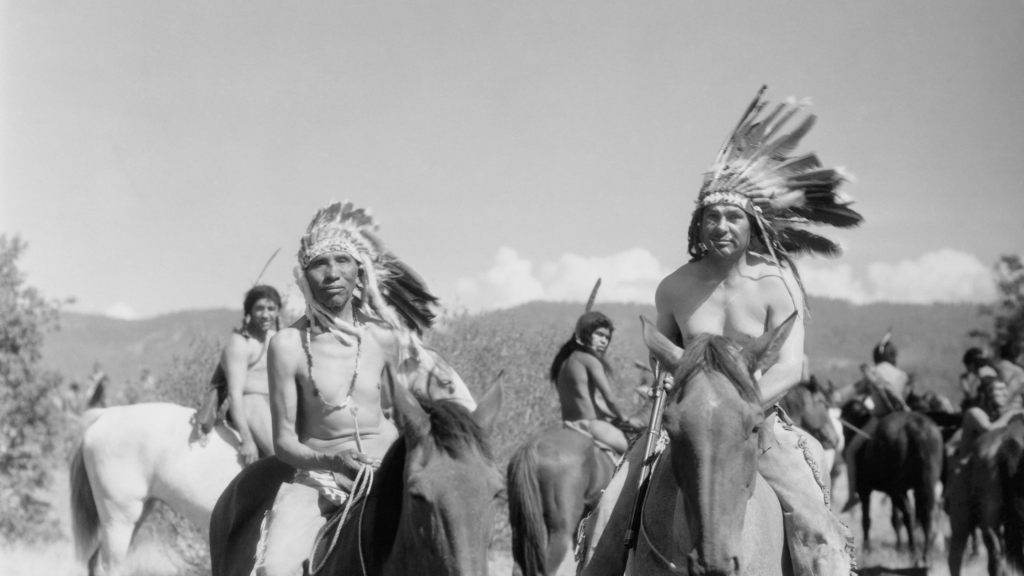The History of Albuquerque: From Its Founding to Today
Albuquerque is a city with a rich blend of history, shaped by influences from Native American, Spanish, Mexican, and American cultures. From its origins as a Native American hub, through Spanish settlement and Mexican rule, to U.S. incorporation, each era adds a unique dimension to its vibrant identity.
In this blog post, we’ll explore Albuquerque’s past, highlighting key milestones that shaped its unique character. Albuquerque’s story is complex and fascinating, showcasing a journey through diverse influences that have crafted the city you see today.
Read on as we explore the intriguing chapters of Albuquerque’s past and discover how these elements have shaped its present-day cultural diversity. Whether you’re a history enthusiast or simply curious about this unique locale, Albuquerque’s history offers a captivating tale worth exploring.
Albuquerque’s Early Days: Native American Roots

Before Europeans arrived in the Rio Grande Valley, the area was home to Pueblo peoples, including the Tiwa, who played a vital role in shaping Albuquerque’s history.
These indigenous communities were skilled agriculturists, developing sophisticated irrigation systems to grow crops like corn, beans, and squash. Their societies were community-centered, with robust trade networks connecting them to other native groups across the Southwest.
The Tiwa people, in particular, contributed significantly to Albuquerque’s early development with their unique social structure and advanced agricultural practices.
Chaco Canyon, a notable nearby site, offers insight into the architectural and astronomical expertise of these early inhabitants. These ancient Puebloan settlements highlight a complex and thriving culture that laid the groundwork for the Albuquerque we recognize today.
To gain a hands-on understanding of this foundational history, visit local Pueblo sites or museums.
Pueblo Culture and Heritage
Puebloan life was characterized by advanced farming techniques, strong community structures, and extensive trade connections. These elements collectively influenced Albuquerque’s foundational history, demonstrating the profound impact of Pueblo culture on the region.
Today, nearby Pueblo communities continue to preserve and celebrate their heritage through events and cultural centers, linking past and present. A visit to the Indian Pueblo Cultural Center is highly recommended, as it offers valuable insights into Albuquerque’s rich Pueblo heritage.
The Arrival of the Spanish: Founding Albuquerque (1706)
The Spanish arrived in the Rio Grande Valley, attracted by fertile land and the strategic location for expanding their territories. They sought resources and aimed to spread Christianity, aligning with their colonial ambitions. This area promised new opportunities and a foothold in the region.
In 1706, Governor Francisco Cuervo y Valdés established the original settlement named “Alburquerque,” after the Duke of Alburquerque in Spain, as a Spanish colonial outpost. Positioned along the El Camino Real, the city connected Mexico City and Santa Fe, making it a vital trade route.
The city’s layout around a central plaza reflects traditional Spanish colonial city planning, with the Spanish Plaza becoming a hub for commerce and religious activity, anchored by the San Felipe de Neri Church, a cornerstone of community life.
Today, Albuquerque reflects its colonial past through its architecture, festivals, and cultural practices. Adobe structures and vibrant traditions speak to the enduring Spanish influence, creating a unique character that continues to engage those who call the city home.
Key Elements of Spanish Legacy
-
- Religion: The prominence of churches like San Felipe de Neri underscores the lasting impact of Spanish religious influence. The annual Fiesta de San Felipe de Neri in Old Town honors the city’s Spanish religious roots and is still celebrated today.
-
- Architecture: Adobe buildings showcase the architectural style introduced by early settlers. Old Town Albuquerque remains a must-visit area where Spanish influence is evident in the architecture.
-
- Community Practices: Traditional festivals and cultural events highlight the rich tapestry of Spanish heritage that still shapes Albuquerque today. Community events in Old Town further emphasize this cultural influence.
Mexican Independence and Its Impact on Albuquerque (1821)

Transition from Spanish to Mexican Control
In 1821, Mexico’s independence from Spain reshaped Albuquerque’s governance. The shift from Spanish to Mexican control brought new leadership and policies, reflecting wider changes throughout the region.
Changes Under Mexican Rule
Mexican independence introduced new land ownership policies, impacting Albuquerque’s residents significantly. The Mexican government encouraged land grants for settlers, changing land ownership structures and expanding local settlements.
Trade liberalization opened doors for commerce with the United States, creating fresh economic opportunities. This period also marked the beginning of cultural interchange, as Mexican traditions blended with local customs.
Cultural Impacts of Mexican Rule
The cultural blending during this era helped form Albuquerque’s multicultural identity. Influences from Mexican and Native traditions enriched everyday life, as seen in New Mexican cuisine and music that integrate Mexican and Pueblo traditions.
This blending laid a foundation for future growth and diversity. When visiting, explore local eateries or cultural festivals to experience this vibrant cultural mix firsthand.
The U.S. Takes Over: Albuquerque in the American West (1848)
Transition to U.S. Control
In 1848, the Treaty of Guadalupe Hidalgo transferred New Mexico, including Albuquerque, into U.S. hands, marking the end of Mexican governance. This treaty was pivotal, granting U.S. citizenship to Mexican residents in the area, which significantly impacted land rights and cultural dynamics.
Albuquerque’s identity began shifting from a Spanish-Mexican frontier to an American frontier town, marking a new chapter.
Albuquerque as a Frontier Town
During this era, Albuquerque emerged as a quieter frontier town, strategically located along the Camino Real and the Santa Fe Trail. These vital routes connected the town to vibrant markets, facilitating the exchange of goods and ideas vital for U.S. westward expansion.
The Railroad’s Economic Influence
The arrival of the railroad in 1880 was transformative for Albuquerque. It catalyzed economic growth, boosted population numbers, and reshaped the town into a commercial and transportation hub.
The railroad prompted the development of New Town Albuquerque near the tracks, contrasting with Old Town’s Spanish layout. This pivotal event enhanced trade and connectivity, laying the groundwork for Albuquerque’s future development.
20th Century Albuquerque: From Dusty Town to Modern City

Early 1900s Developments
In the early 20th century, Albuquerque began its transformation into a more modern urban center. The construction of Route 66 played a significant role, bringing tourists and travelers that invigorated the city’s economy.
This influx of visitors helped Albuquerque shed its dusty town image, paving the way for suburban expansion and growing infrastructure. Route 66 also brought a wave of new businesses, such as motels and diners, which contributed significantly to Albuquerque’s early tourism industry.
Economic and Military Influence
World War II marked a turning point for Albuquerque. The establishment of Kirtland Air Force Base reinforced the city’s military significance, boosting both its economic and infrastructural landscape. During the war, Albuquerque supported U.S. military efforts, becoming a key player in the national defense strategy.
Post-War Growth
After the war, Albuquerque saw rapid suburban growth and diversification in its industries. The city embraced technological advancements, attracting sectors like healthcare and technology. This period of expansion set the foundation for Albuquerque’s continued development and prosperity as a modern city.
Growth by Decade
-
- 1920s: Route 66 construction spurred tourism, bringing new businesses like motels and diners, and attracting diverse groups of residents and visitors.
-
- 1940s: Kirtland Air Force Base established; WWII boosted the local economy and introduced new cultural influences.
-
- 1950s: Suburban expansion took off, driven by post-war prosperity, bringing a variety of people and contributing to the city’s multicultural fabric.
-
- 1960s: Diversification into healthcare and technology began, fostering further cultural diversity.
-
- 1970s: Continued urban growth and modernization efforts transformed Albuquerque into a modern, culturally rich city.
Albuquerque Today: A Blend of Cultures and Innovations
Albuquerque is a city where a diverse mix of cultures thrives. The blending of Native American, Hispanic, and American influences creates a unique cultural tapestry. This intersection of traditions is reflected in the city’s vibrant arts scene and notable landmarks.
The Albuquerque International Balloon Fiesta and Old Town are just two examples that attract visitors, showcasing the city’s cultural richness and ongoing celebration of its heritage, drawing global attention.
Looking ahead, Albuquerque is on the path to growth in renewable energy, science, and technology. Notably, tech initiatives like renewable energy research at Sandia Labs align with the city’s innovation goals. Its commitment to innovation and sustainability positions the city as a forward-thinking metropolis with a promising future.
The History of Albuquerque: Celebrating the City’s Remarkable Past

Albuquerque’s journey is a rich story woven from its Native American origins through Spanish, Mexican, and American influences, evolving into the vibrant city it is today. This city stands as a testament to resilience and adaptability, where diverse cultures have shaped its unique identity.
For those interested in tracing this historical path, Albuquerque offers a wealth of experiences. Visit its museums, explore historic sites, and attend cultural events to connect with the city’s past. Whether you’re a local or a visitor, Albuquerque invites you to discover and appreciate its captivating story through its historical and cultural landmarks.To truly experience Albuquerque’s history firsthand, visit notable sites like the Albuquerque Museum and the Indian Pueblo Cultural Center. These locations provide a deeper connection to the city’s past. Dive into Albuquerque’s unique story by exploring its museums, historical sites, and cultural events today!

0 comments